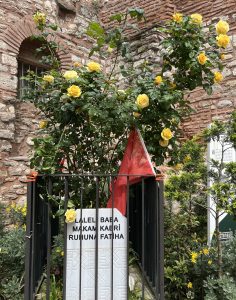“With a Tulip”
Old name: Koska
West of Sultanahmet on Ordu Caddesi, the continuation of Divan Yolu, Laleli is a frantically busy commercial neighbourhood with a sprinkling of tourist activity mixed in with a great deal more retailing of clothes. It’s a popular area in particular with Russians and Iranians but one most visitors whiz through on the tram without thinking of getting out to explore despite the attraction of the huge Laleli Cami complex right by the tram line.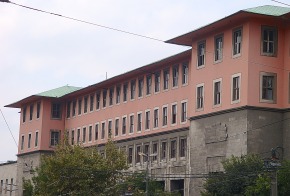
If you walk to Laleli from Beyazıt you will pass, on the right, the austere pink-and-grey building that houses İstanbul University’s Literature Faculty. While most people will not find it especially attractive it is nonetheless an example of the work of the award-winning architect Sedat Hakkı Eldem, proponent of a style of architecture labelled Second National. He designed it with Emin Onat in 1942-44. It houses the small Rıdvan Çelikel Museum about archaeology (open weekdays, admission free).
Laleli Cami
In 1759 it was Sultan Mustafa III who commissioned the architect Mehmed Tahir Ağa to build the brick-and-stone Laleli Cami where he was later buried with his son, Sultan Selim III. Completed in 1763, it was one of the last great mosque complexes to go up in the city and now completely dominates Laleli, not least because it was built on a platform that raises it up above the shops in front of it.
The sultans’ elegant tomb with its wrought-iron grilles juts out onto the pavement, its facade decorated with small birdhouses. Mirroring it on the other side of the gateway leading into the mosque is a fine sebil (water dispensary), now used as a small shop selling olive-oil products.
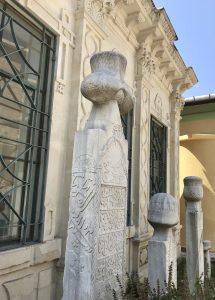
The gateway opens onto a flight of steps leading up to the mosque on its wide platform. To the left of the steps stands the imaret (soup kitchen) of the mosque complex.
Laleli might appeared to be named after a tulip but in reality it was named after a popular holy man named Laleli Baba who may have lived in the 16th or 18th century (and may himself have been a tulip-lover). His tomb originally stood on Ordu Caddesi near the mosque but when the road was widened in 1957 it had to be moved into the graveyard attached to the small Kemal Paşa Cami tucked away behind Laleli Cami, off Gençtürk Caddesi.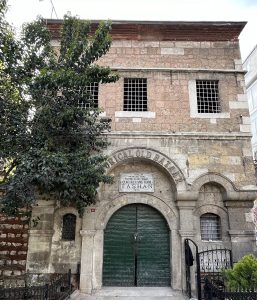
Just round the corner from Laleli Cami in Fethi Bey Caddesi, the Büyük Taş Han (Big Stone Han), originally called the Çukur Çeşme Hanı (Sunken Fountain Han), may have been attached to the mosque at one time. It used to house a teahouse and a restaurant in underground stables that started life as a cistern, and supposedly stands on the site of the brothel where the Emperor Justininan’s wife, Theodora, started her working life. Alas, today the gates are firmly locked to the public.
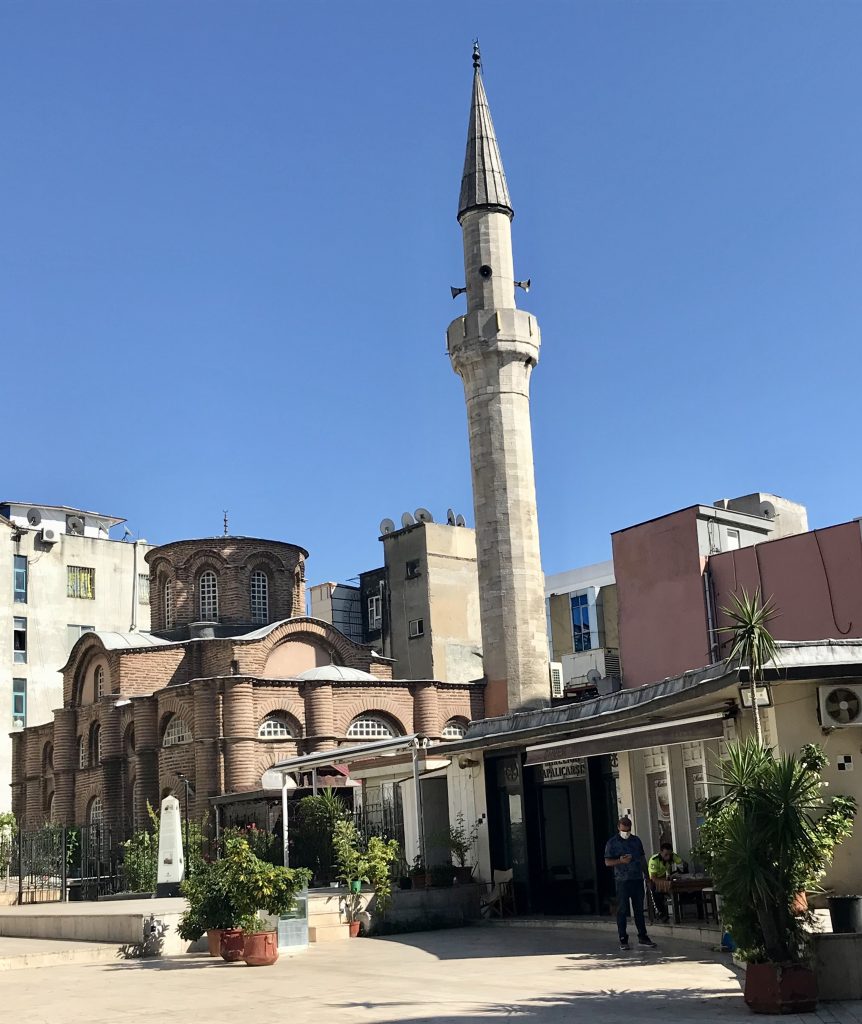
Around Laleli
Across the road from the mosque, Mehmed Tahir Ağa also designed a library for Sultan Mustafa III’s grand vizier Koca Ragıp Paşa in 1762. For decades visitors have only been able to gaze wistfully at the magnificent calligraphy over its sunken gateway. In theory the complex is now being comprehensively renovated but much time has been passing…
Laleli’s other gem of a building is tucked away amid the cheap clothing emporia in the back streets on the other side of Ordu Caddesi where few visitors ever find it. The cute little red-brick Church of the Myrelaion (“place of myrrh”, Bodrum Cami) originally stood near the palace of the Emperor Romanos Lecapenos I, the circular shape of which used to be marked out on the ground beside it. Unusually the church was built on two storeys, a feature which may have been intended to raise it to the same height as the palace (the existence of the lower storey explains why when it was converted into a mosque in the 15th century it was renamed the Bodrum – Basement – Cami). It was used as a burial chapel for the emperor and his family, breaking the tradition whereby the emperors were all buried in the Church of he Holy Apostles. To find it head south along Koska Caddesi opposite Lalei Cami and then turn left.
Right beside the mosque one of Istanbul’s many underground water cisterns has been turned into a shopping mall. Apparently the circular palace had been built over an older Rotunda dating back to the 5th century which is said to have been the second largest such structure after the Pantheon in Rome. The cistern was apparently created out of the Rotunda after it was abandoned in the 10th century.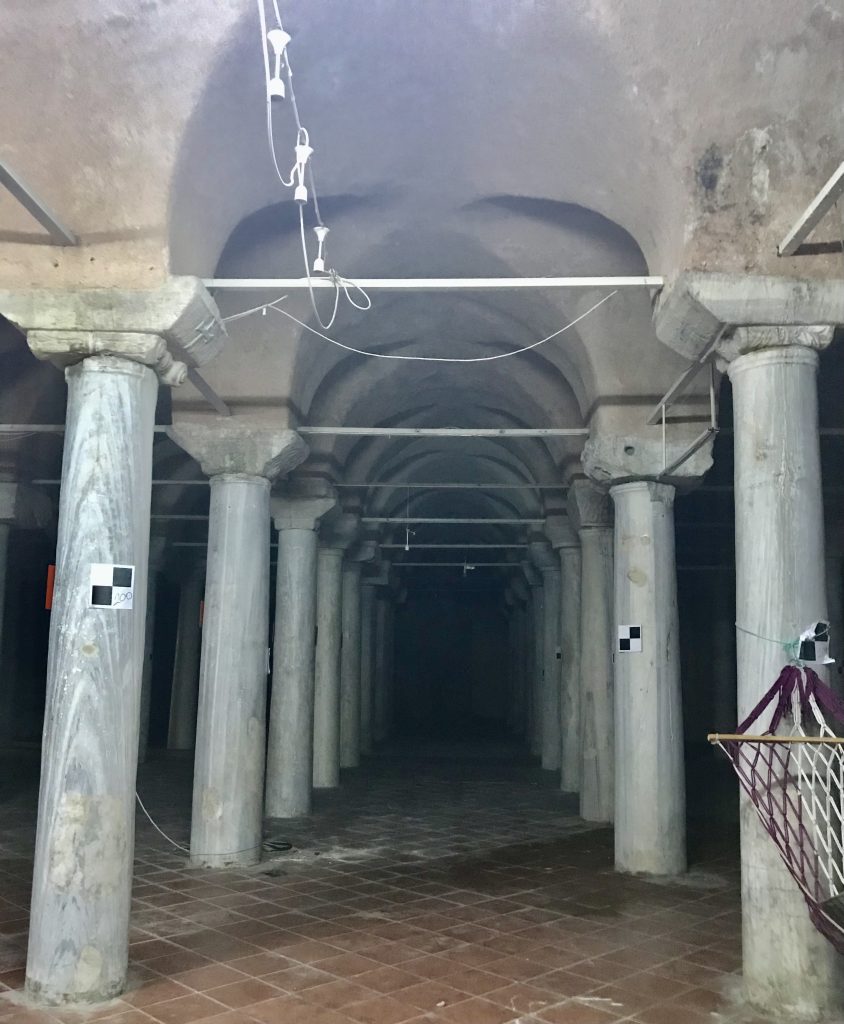
The only other building of specific note in Laleli faces Laleli Cami across Fethi Bey Caddesi. Now converted to house the Crowne Plaza Hotel, it started life as the Tayyare Apartment (Harikzedegan Apartment) block, designed by Kemaleddin Bey to house those made homeless by a fire in Fatih in 1918.
Sleeping
Crowne Plaza İstanbul. Tel: 0212-514 9000
Double Tree by Hilton Istanbul – Old Town. Tel: 0212-453 5800
Hotel Polatdemir. Tel: 0212-518 5540
Transport info
There is a tram stop at Laleli/Üniversite although it’s only a short walk here from Beyazıt and the Kapalı Çarşı (Grand Bazaar).
Nearby areas
Read more about Laleli: http://www.turkeyfromtheinside.com/blogbloggingaboutturkey/entry/14-strolling-down-army-street.html
